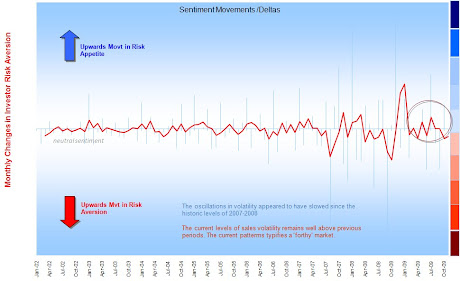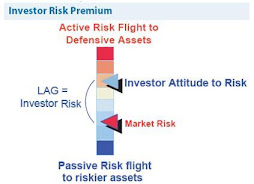'Diversification..'
It's an often used term that we see in the industry - it crops up in ETFs and Structured Products to mutual funds and managed offerings.. Structured Products, cyclically, come to the fore anytime there is uncertainty among investor sentiment (often after a good index run or when an index is trading somewhere above it's historical mean).
Diversification has always been a great seller of products - it's a term that chimes well with investors and IFAs. In short, it's a pretty abused and ambiguous term - probably not what the early inventors such as Markowitz, Fama and Sharpe had in mind for it.
Let's take a structured product - perhaps it invests over say 5 years - it splits your initial investment between a zero coupon bond to basically pay back the initial investment (as 'ZCBs' are discounted to their maturity value and pay no interest). The rest is then put into a FTSE100 option to invest for possible return over and above the g'tee. Depending on the position of the market the option may give the right to buy or sell shares at a pre-set 'strike' price. If the markets move against the option then the option premium is absorbed (loss) and the investor gets back their initial sum from the ZCB. Fair enough you might say.
But is this diversified/? True there is FTSE100 somewhere in there (on the marketing material at least) promising diversification through all 100 of the UK's biggest and brightest blue chip stocks. However unlike a normal portfolio the contract gives only a fixed exercise/maturity date. Also there are no dividends from the option as it doesn't physically represent a holding until the option is exercised and only then to be encashed with the option writer (div yield has been one of the core diversifiers in equities). Nor does the option grant voting rights for any of those 100 companies. Is the case for diversity looking a little flimsy?
Before I go further it's worth re-capping that different assets and different companies return profit over different timescales (called 'horizons'). It is these attributes + the different volatilties therein that create the case for diversification. To avoid the risk of one by investing in the many, to invest different assets over different horizons.
For me the basics of MPT were based on the early regression analyses - that a basket of multiple stocks of varying correlations and covariances could be combined to reduce the overall portfolio volatility; while maximising the overall upside per each unit of risk. The key variable with equities is
Time - different stocks may return profit over different periods in the economic cycle. Time it wrong and you can lose everything; time it right and you profit. Simples.
However the structured product doesn't do this - it only gives you one bite at the cherry. ZCBs are rarely callable (since there is no coupon) and American option pricing is a rarity in the UK so the maturity is likely to be fixed lest penalties apply. Some issuers even 'collar' the upside (akin to a performance fee) to basically cover the option writer should markets move
against it (and
for the investor) significantly. In fact some issuers can turn this around to their advantage and take the top-side profit. Anything over and above the 'collar' goes to the issuer; not the investor. This is a common trade-off with structured products. If you wanted to plot the SP on a regression chart you couldn't conventionally; instead tracing a straight line for the ZCB and a variable point for the Option.
Also - because most of the investor's initial investment is used to buy the ZBC - the remaining amount can only buy a % of exposure to the UK market. Fair enough, if the option ends up being 'in the money' then it is a leveraged position and the returns will be greater proportionally BUT it is highly unlikely to be anywhere near 100% long-exposure. If we assumed buying FTSE100 was diversifying the portfolio then a 100% investment into an ETF or UK FTSE100 fund would give something close to 100% diversification; if you only invest 20% of your investment in the FTSE100 option to give 50% leveraged exposure to the FTSE100 then you are still only 50% diversified; (ignoring the ZCB).
A FTSE100 option is a derivatives contract usually based on 1% movements in the FTSE100 with a nominal value of £1, £100 etc. The FTSE100 index itself is a capitalisation weighted free float index that gives a proxy of the underlying stocks (that is the biggest companies influence the index movement to a greater extent than smaller companies).
To buy an ETF or Option in the FTSE100 is not the same as owning the stock. The price of the Option and the ETF can move independently although both are supposed to be pegged to the index. Whereas footsie ETFs tend to be pretty faithful; options can experience 'basis risk' - i.e. they follow the futures market and a margin can arise between the current FTSE100 price and the Option price. So in reality the Option is a contract based on a proxy based on a basket of underlying stocks. The end return to the investor is largely pre-determined to a point at outset and has less to do with the diversified investment of 100 stocks than it does to the maturity value of the ZCB and the option exercise price. Some say SPs play on investor anxiety at the sake of boosting their long term returns. As with everything there are 2 sides to the argument.
Certainly in this case the structured product offers no covariances, no correlations, no multiple time horizons during the life of the investment. It is about as diversified as a UK tracker that could only return across a fixed period between point A to point B. Many investors have found out just how diversified investing in beta really is by buying and selling at the wrong time (1997/1998, 2001/2002, 2007/2008).
SPs are of course cover a wide variety of products and not all will be constrained in the way I have described but the basic ingredients are there. One asks if a series of ZCBs, with varying maturities, and reinvestment points coupled to an American priced Option or series of Options could be a way to give the investor better access to time the markets through the investment period.
In some ways SPs are even less 'diversified' than ETFs/trackers because the stuctured product doesn't hold the stocks and has less liquidity (harder to sell at any point). At best the SP is a split investment between the ZCB and an option proxy for UK equities. The diversification benefits are thus limited to the composite return of the ZCB + the option based on a single weighted average price index (a bond and a derivative). Diversified, on some grounds perhaps, on others less so. The question is if you took away the outer packaging would you have considered a ZCB and the Option on individual merits?
Let's not even get into capital g'tees versus inflation and real rates of return..



